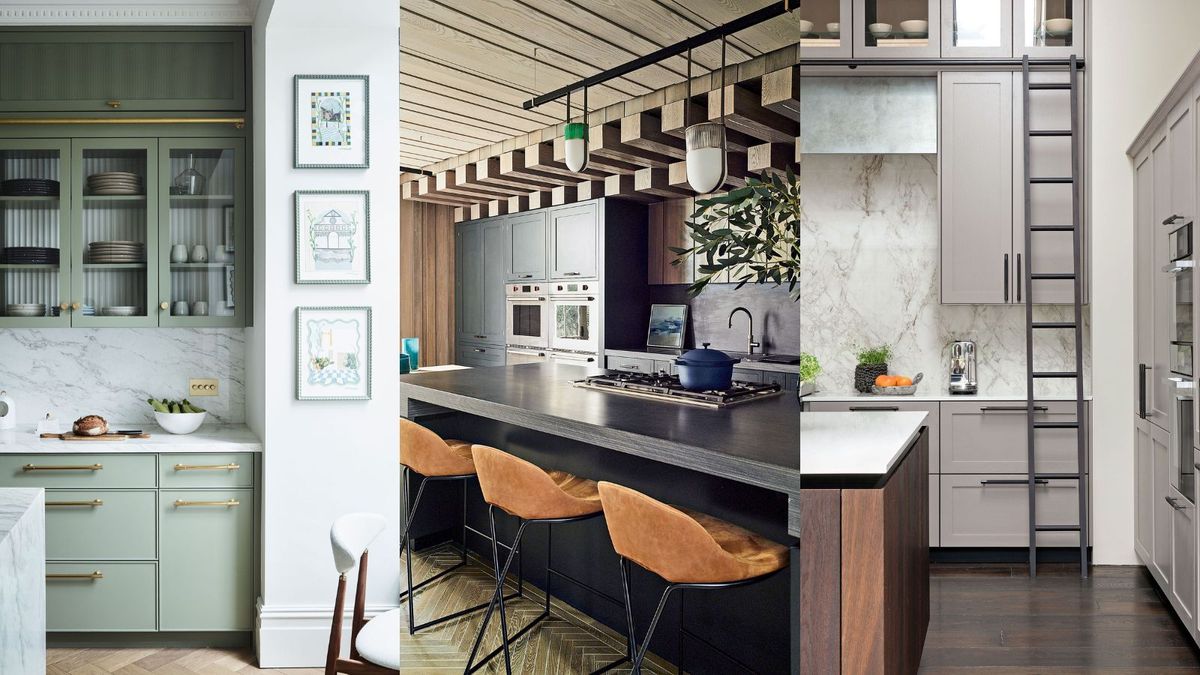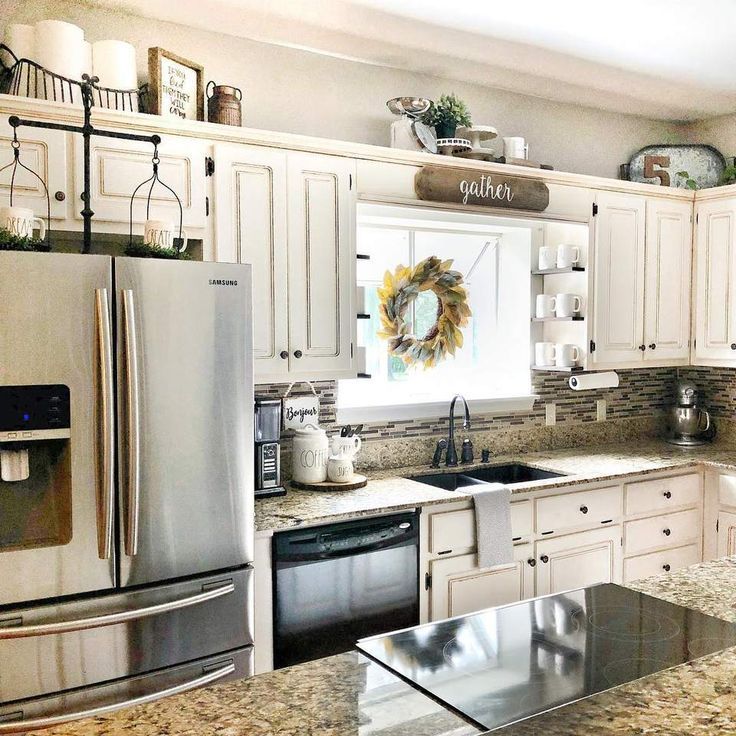Soffit Above Kitchen Cabinets

The soffit above kitchen cabinets is a structural element that serves both aesthetic and functional purposes. It’s essentially a concealed space that hides the underside of upper cabinets, creating a clean and finished look. This space can also house various utilities like wiring, plumbing, and ventilation systems, ensuring a clutter-free kitchen design.
Soffit Materials, Soffit above kitchen cabinets
The choice of material for the soffit depends on factors like budget, desired aesthetic, and the overall style of the kitchen. Here are some common materials used for soffit construction:
- Drywall: Drywall is a cost-effective and versatile material that offers a smooth and easily paintable surface. It’s a common choice for soffits due to its ease of installation and ability to blend seamlessly with the surrounding walls.
- Wood: Wood soffits can add warmth and character to the kitchen. Options include plywood, MDF, or even real wood panels, each offering distinct visual appeal and durability.
- Metal: Metal soffits are durable and resistant to moisture, making them suitable for kitchens with high humidity levels. They are typically made of aluminum or steel and come in various finishes to complement different kitchen styles.
- Plastic: Plastic soffits are lightweight, moisture-resistant, and often come in pre-fabricated panels for easy installation. They are generally less expensive than other materials but may not be as durable.
Soffit Styles and Designs
Soffit styles can significantly impact the overall look of the kitchen. They can be designed to complement the cabinets, integrate seamlessly with the surrounding walls, or create a focal point.
- Recessed Soffit: This style features a soffit that is recessed slightly below the cabinets, creating a shadow line that adds depth and dimension.
- Flush Soffit: A flush soffit sits flush with the bottom of the cabinets, providing a clean and minimalist look.
- Valance Soffit: A valance soffit is a decorative element that extends beyond the cabinets, often featuring molding or trim. It can add visual interest and enhance the overall style of the kitchen.
- Coffered Soffit: Coffered soffits feature a series of recessed panels, creating a sophisticated and elegant design. They are often used in kitchens with traditional or formal styles.
Benefits of Soffit Above Kitchen Cabinets

Soffit above kitchen cabinets, also known as a valance or cornice, can significantly enhance the functionality and aesthetics of your kitchen. By strategically incorporating soffit, you can elevate the overall design and create a more practical and visually appealing space.
Functionality
Soffit above kitchen cabinets can enhance the functionality of your kitchen in various ways. The most notable benefit is the creation of additional storage space. The area above cabinets can be utilized for storing items that are not frequently used, freeing up valuable counter space. This can be particularly useful in smaller kitchens where space is limited.
Considerations for Soffit Above Kitchen Cabinets

Before committing to a soffit above your kitchen cabinets, it’s essential to carefully weigh the pros and cons and consider several key factors that can significantly impact the overall look and functionality of your kitchen. This involves analyzing your kitchen’s layout, cabinet height, and personal preferences to ensure a seamless integration that enhances rather than hinders your kitchen’s design.
Kitchen Size and Cabinet Height
The size of your kitchen and the height of your cabinets play a crucial role in determining the feasibility and aesthetics of a soffit. In smaller kitchens, a soffit can create a sense of enclosure, potentially making the space feel cramped. However, in larger kitchens, a soffit can add visual interest and help to define different areas within the space. The height of your cabinets also impacts the overall look of the soffit. If your cabinets are already tall, a soffit may make the space feel even more imposing. Conversely, if your cabinets are short, a soffit can help to create a sense of balance and proportion.
Potential Drawbacks of Soffit
While soffits can enhance the look and functionality of a kitchen, they also come with certain drawbacks that should be considered before making a decision. One of the main drawbacks is the potential for dust accumulation. The space above the cabinets can be difficult to clean, and dust can easily gather on the soffit itself. This can be particularly problematic if the soffit is made of a material that attracts dust, such as wood. Another drawback is limited access to the upper cabinets. A soffit can make it difficult to reach the top shelves of your cabinets, especially if you are short or have limited mobility. This can be a significant inconvenience if you store frequently used items in the upper cabinets.
Tips for Seamless Integration
To ensure that a soffit blends seamlessly with your existing kitchen design, consider these practical tips. Choose a soffit material that complements the existing cabinetry and countertops. If your kitchen has a modern aesthetic, consider using a sleek, minimalist soffit made of metal or acrylic. For a more traditional kitchen, a soffit made of wood or painted to match the cabinetry can provide a cohesive look. Additionally, consider incorporating lighting into the soffit. This can help to brighten the space and create a more inviting atmosphere. You can choose from various lighting options, such as recessed lights, strip lights, or even pendant lights, depending on your desired aesthetic and functionality.
A soffit above kitchen cabinets can hide unsightly plumbing or wiring, but it can also add a touch of rustic charm. If you’re looking for a unique way to enhance your cabinets, consider adding corrugated metal panels to the doors.
You can find a detailed guide on how to attach corrugated metal to cabinet doors , which will help you create a statement piece that complements your soffit and brings a touch of industrial style to your kitchen.
A soffit above kitchen cabinets can hide unsightly plumbing or electrical work, but it also presents a unique opportunity to enhance the room’s style. If you’re aiming for a classic, timeless look, consider incorporating shaker-style cabinet doors. For detailed instructions on crafting these elegant doors, check out this comprehensive guide: how to make shaker cabinet doors.
Once your shaker doors are installed, the soffit above your cabinets will become a focal point, adding a touch of sophistication to your kitchen’s design.
